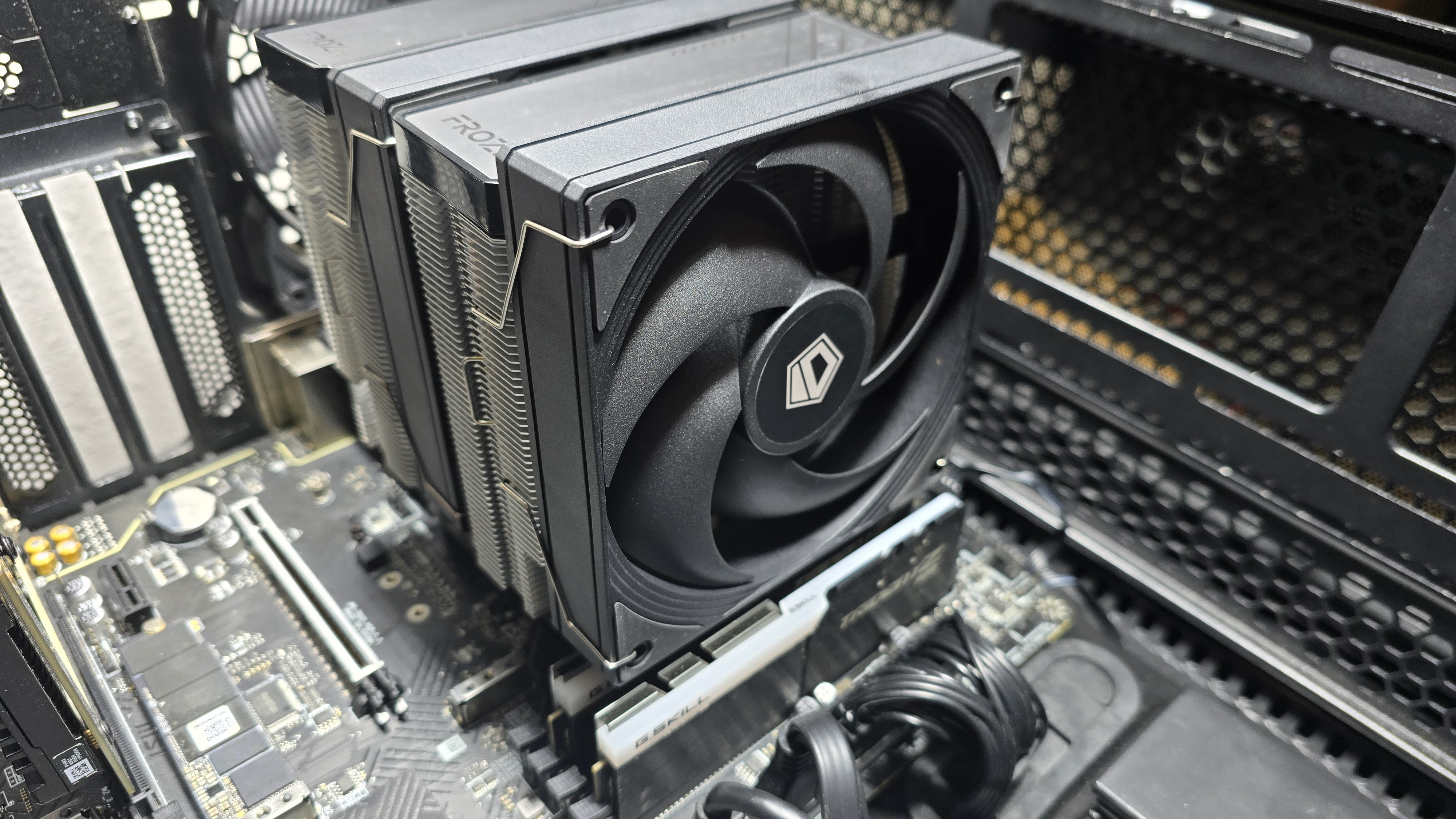
The market for CPU coolers has become more competitive than ever, especially over the past year. Companies like Thermalright in particular have pushed the bar for value and performance with air coolers like the Phantom Spirit 120 EVO in the $40 price range.
But ID-Cooling has recently begun to challenge Thermalright’s claim to the throne for the best value cooling products. Most recently, the company released the FX 360 Pro, a 360mm AIO liquid cooler with performance comparable to coolers that are twice as expensive. Today, we’re looking at the company’s newest challenger, the A620 Pro SE air cooler. This cooler is a revision of the previously released A620, with ID-Cooling promising comparable performance to the original model for only $30, while also running quieter. That certainly sounds good.
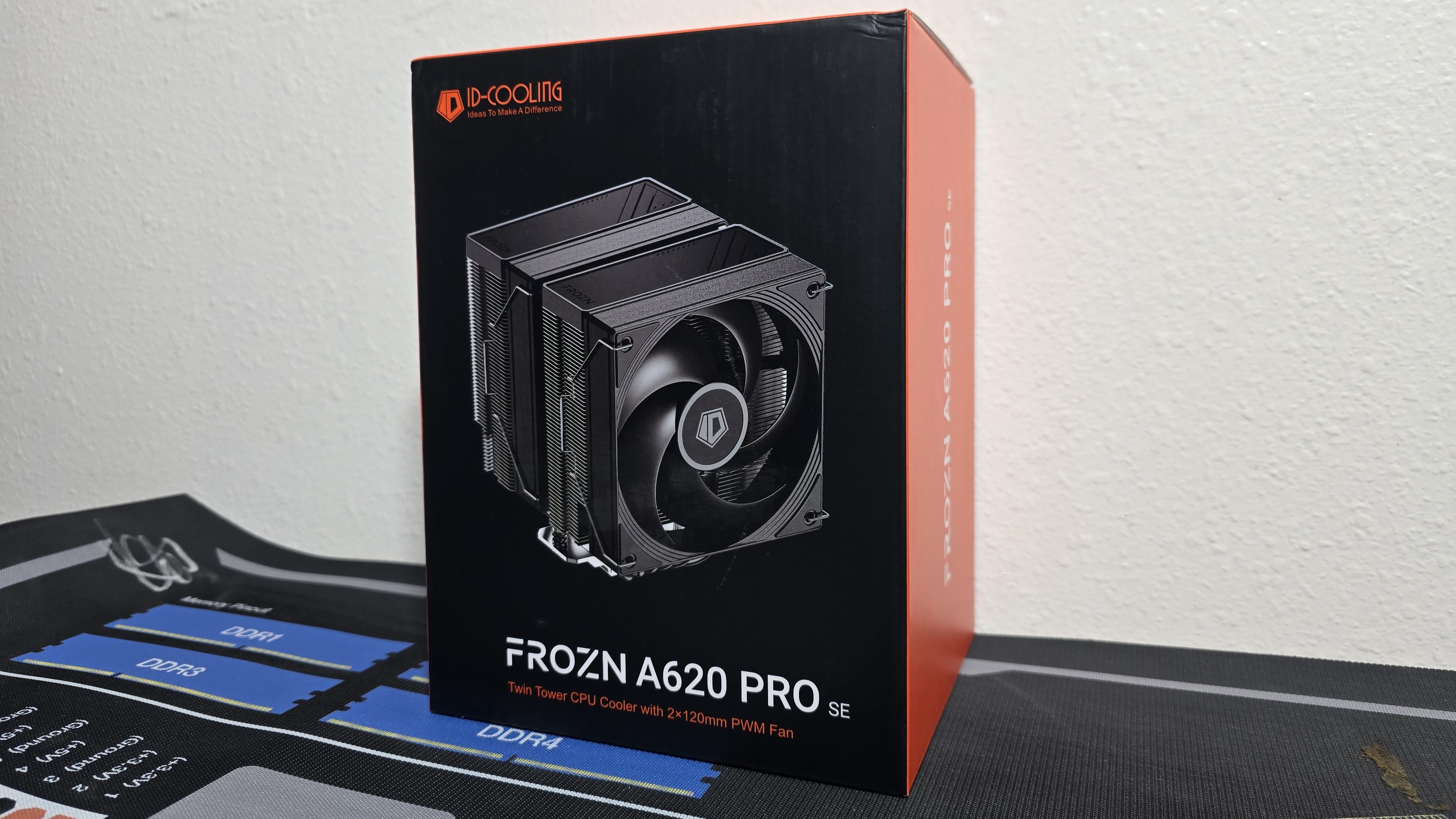
Does the A620 Pro SE live up to these lofty promises? Does it have what it takes to earn a spot on our best air coolers list? We’ll have to put it through testing to find out. But first, here are the specifications from ID-Cooling.
Cooler specifications
Packing and included contents
The inner contents are protected by cardboard and plastic coverings to protect the heatsink, fans, and accessories during shipping.
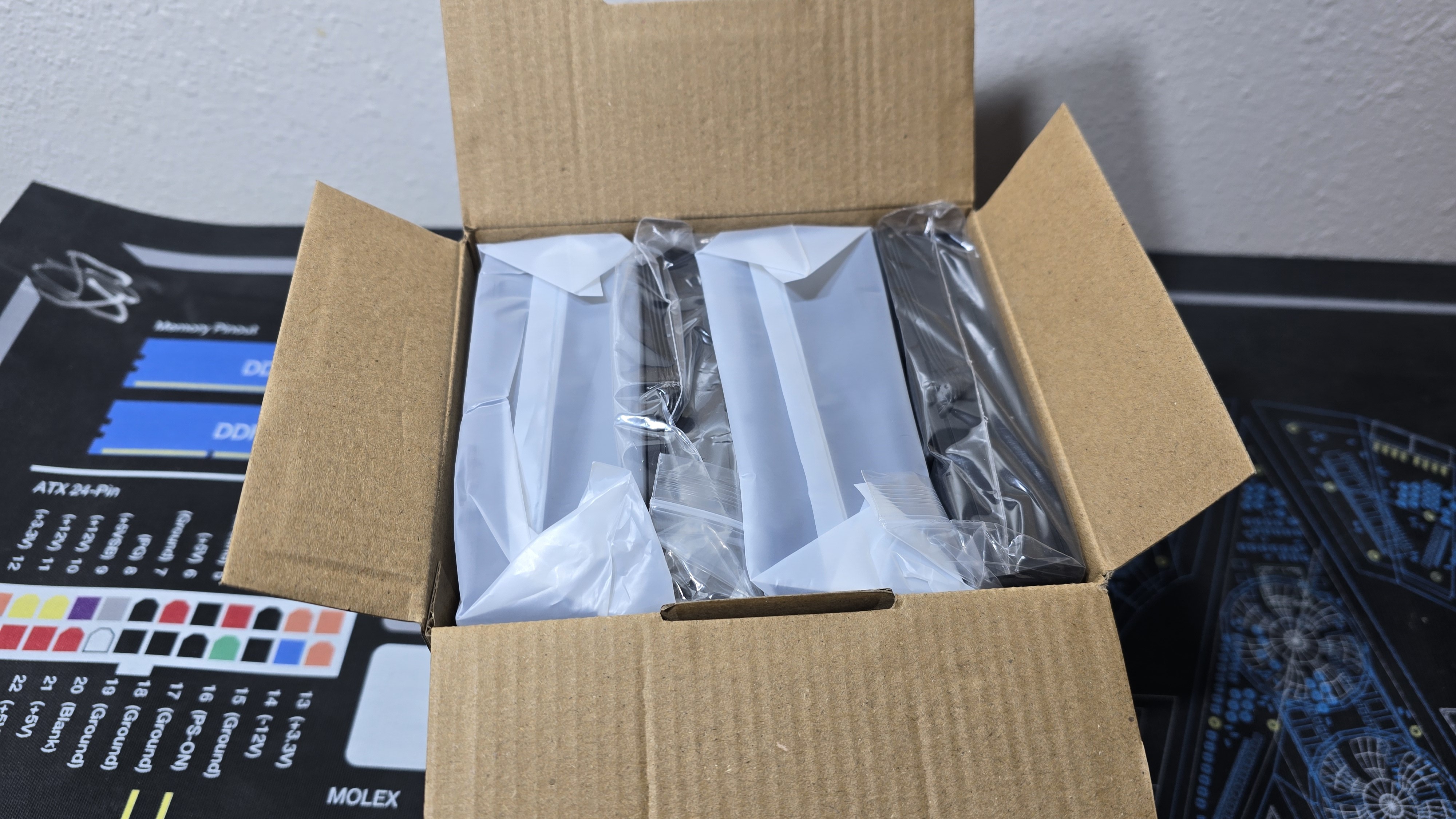
Included with the cooler are the following:
- Dual tower heatsink
- Two 120mm fans
- Mounting for modern AMD and Intel Platforms
- Frost X25 Thermal Paste
- PWM splitter cable
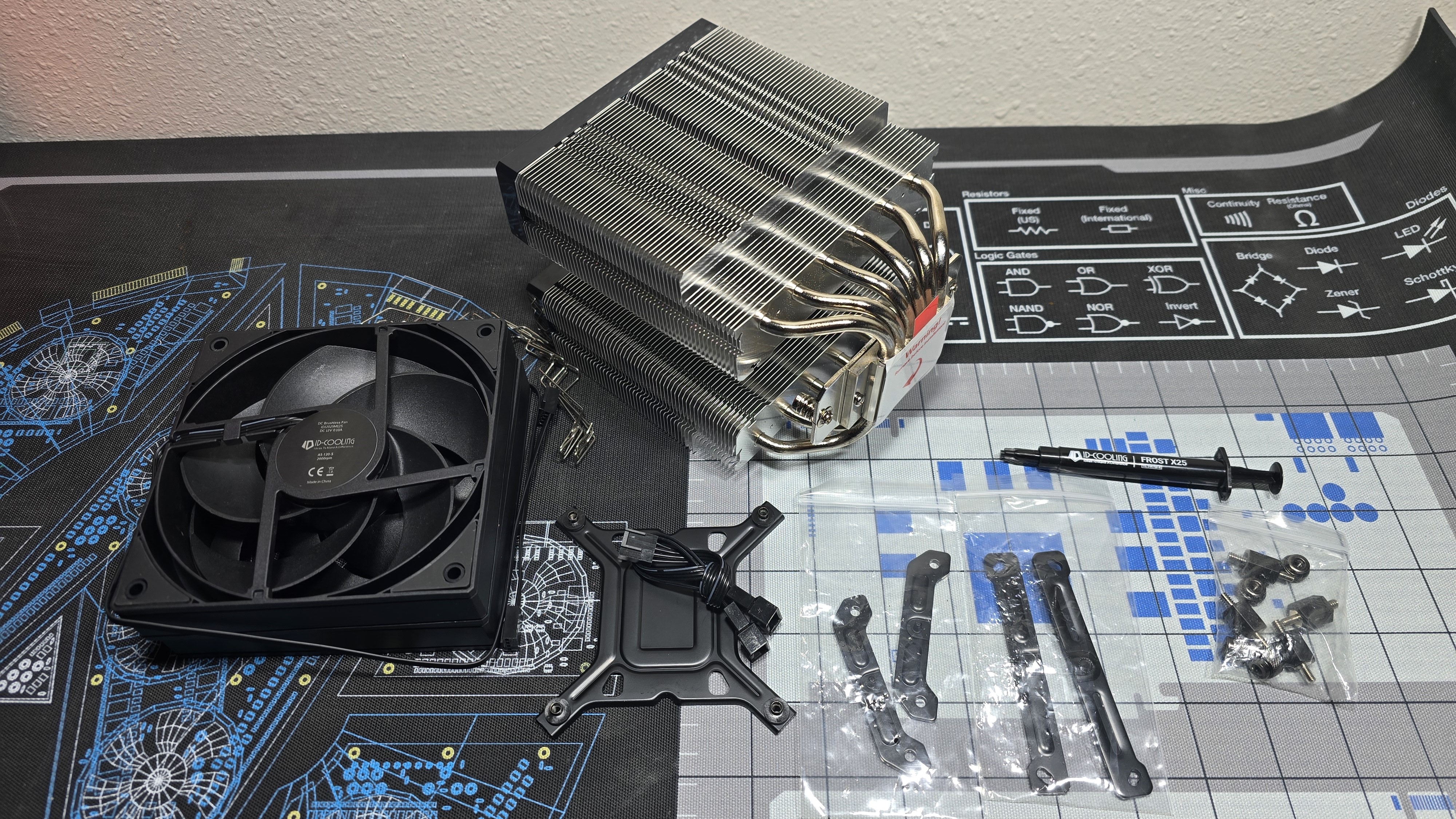
LGA 1700 Installation
The install process for ID-Cooling’s Frozn A620 Pro SE is a simple one.
1. To start, you’ll press the cooler’s backplate against the rear of your motherboard and secure it with the included mounting studs.
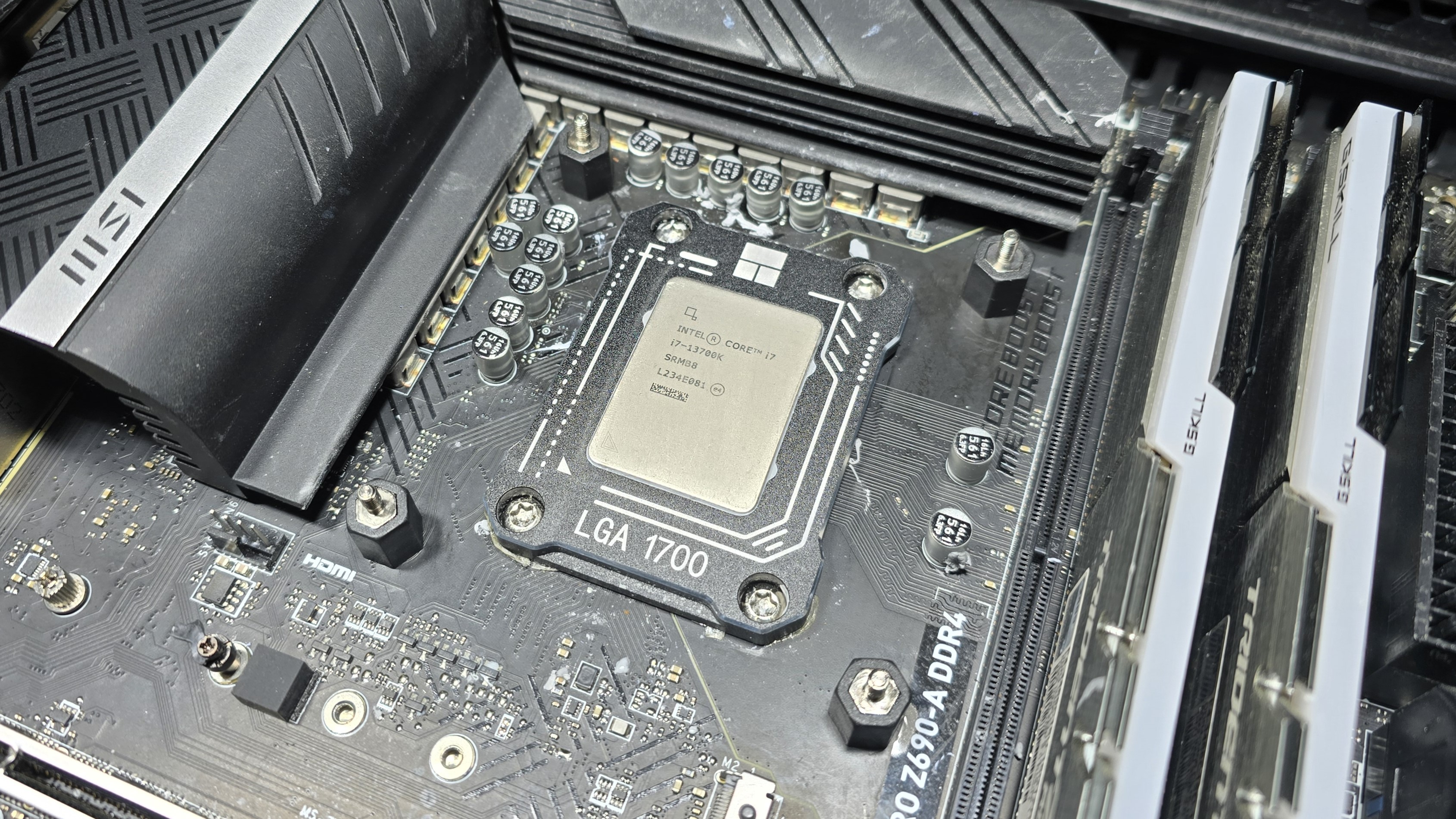
2. The second step is to place the mounting bars on top of the studs, and secure them with the included thumb screws.
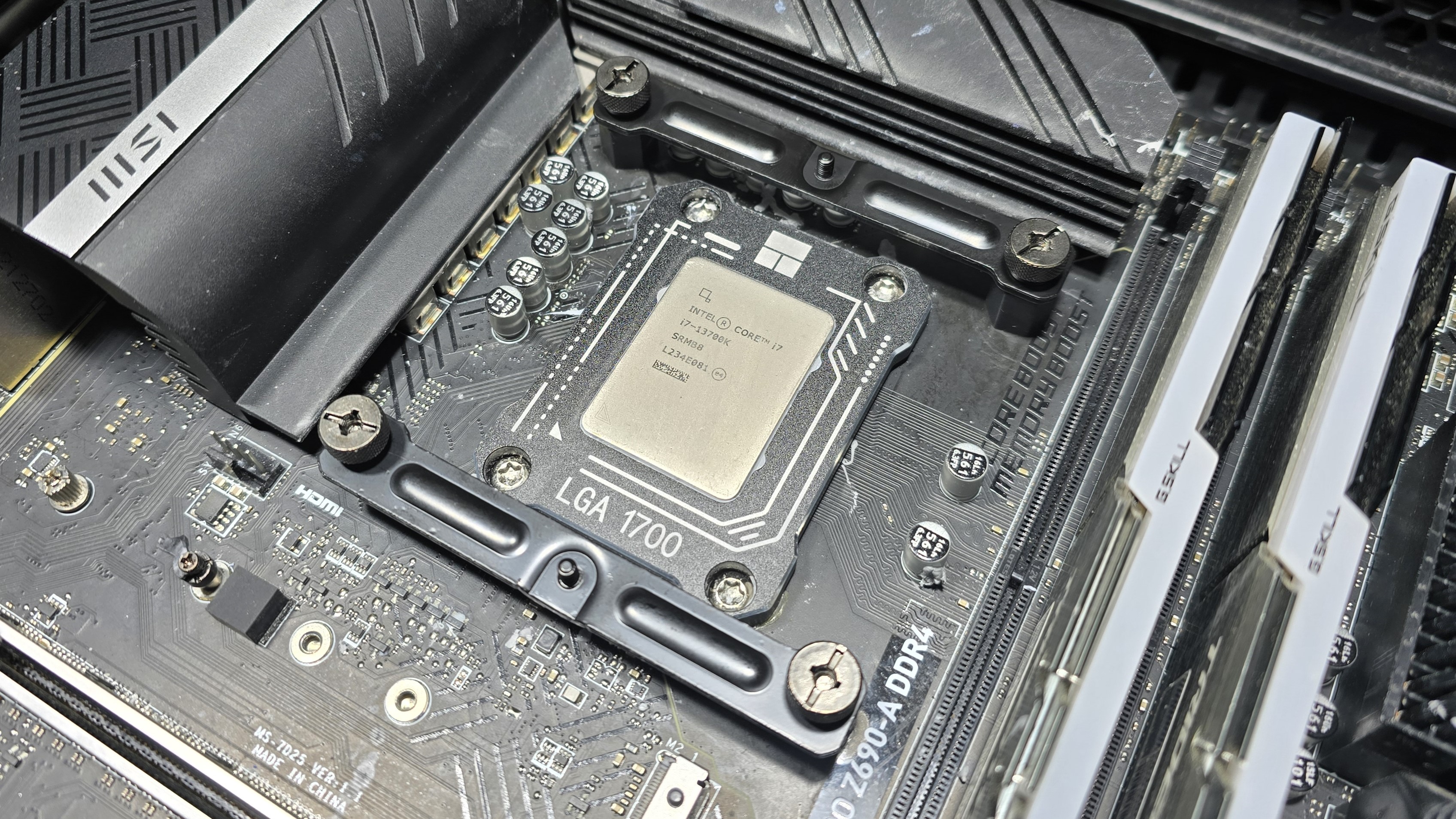
3. Place the heatsink on top of the mounting bars and secure it with a screwdriver.
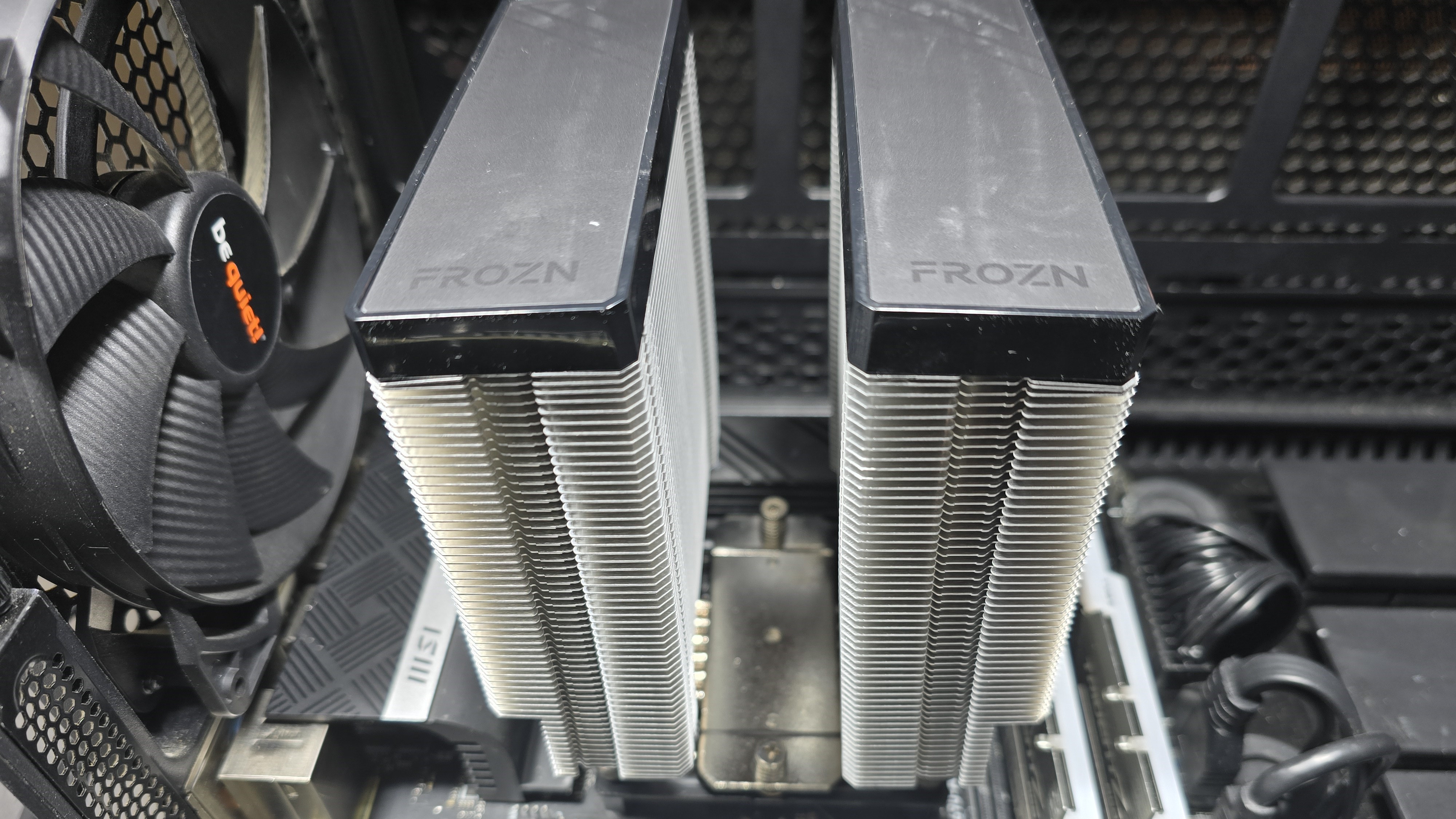
4. Attach the fans using the included fan clips, and then connect the PWM splitter to your motherboard to complete the install process.
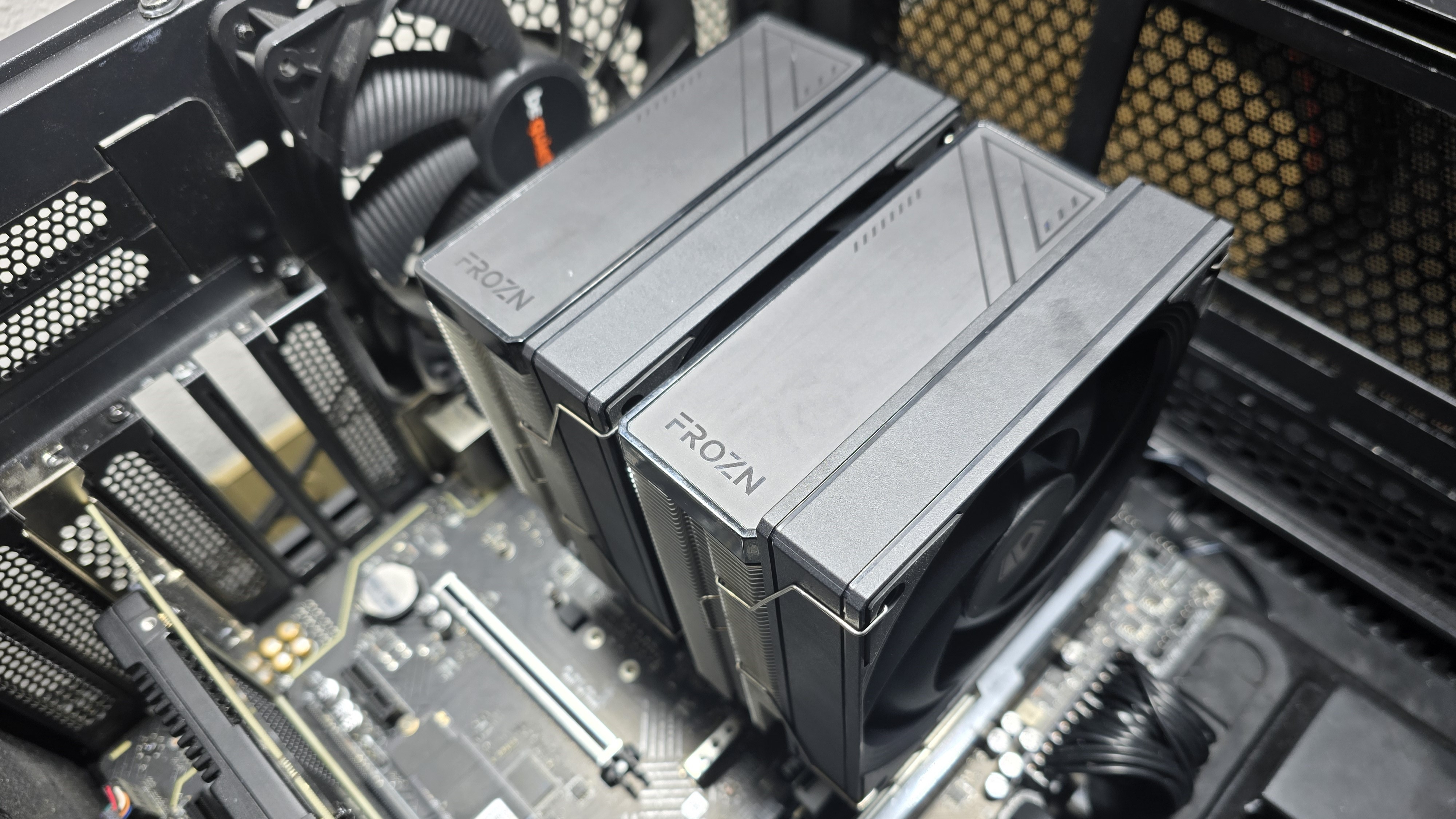
Features of ID-Cooling’s FX 360 Pro
● Budget $30 USD MSRP
The most impressive feature of this cooler is the price – at only $30 USD, it’s cheaper than most coolers on the market – including those from Thermalright, known for its budget options.
● Support for a third fan
ID-Cooling includes an extra pair of fan clips, should you wish to supplement this cooler’s performance with a third fan.
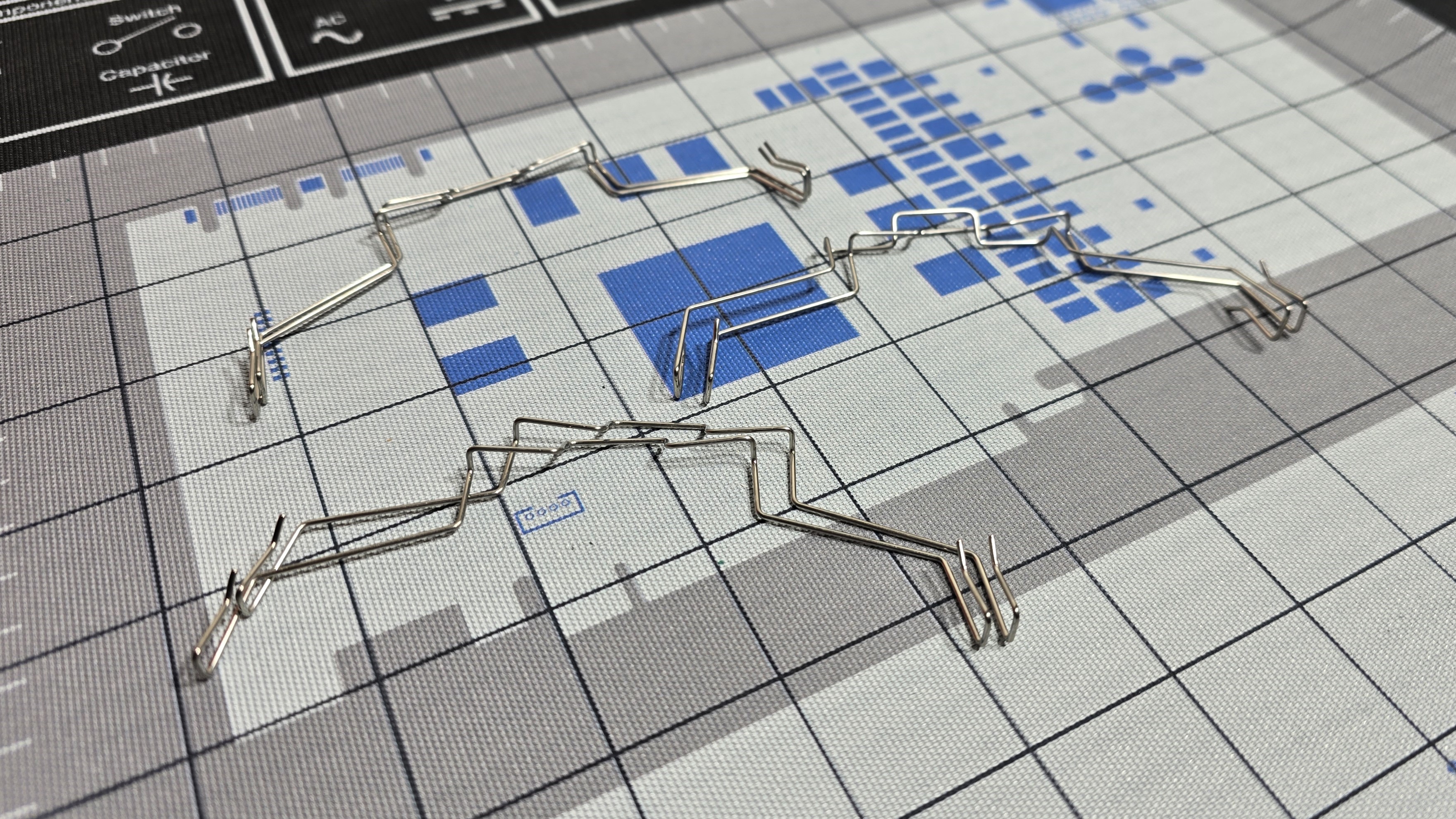
● Limited RAM compatibility
If you’re using taller DIMMs like the G-Skill Trident Z DDR4 I’m using, you’ll have to raise the front fan to avoid interfering with your computer’s RAM slots. This won’t cause significant performance loss. Our benchmarks show it performs well.

● Six Copper Heatpipes
The CPU plate connects to six copper heatpipes to transfer heat to its twin heatsink towers.
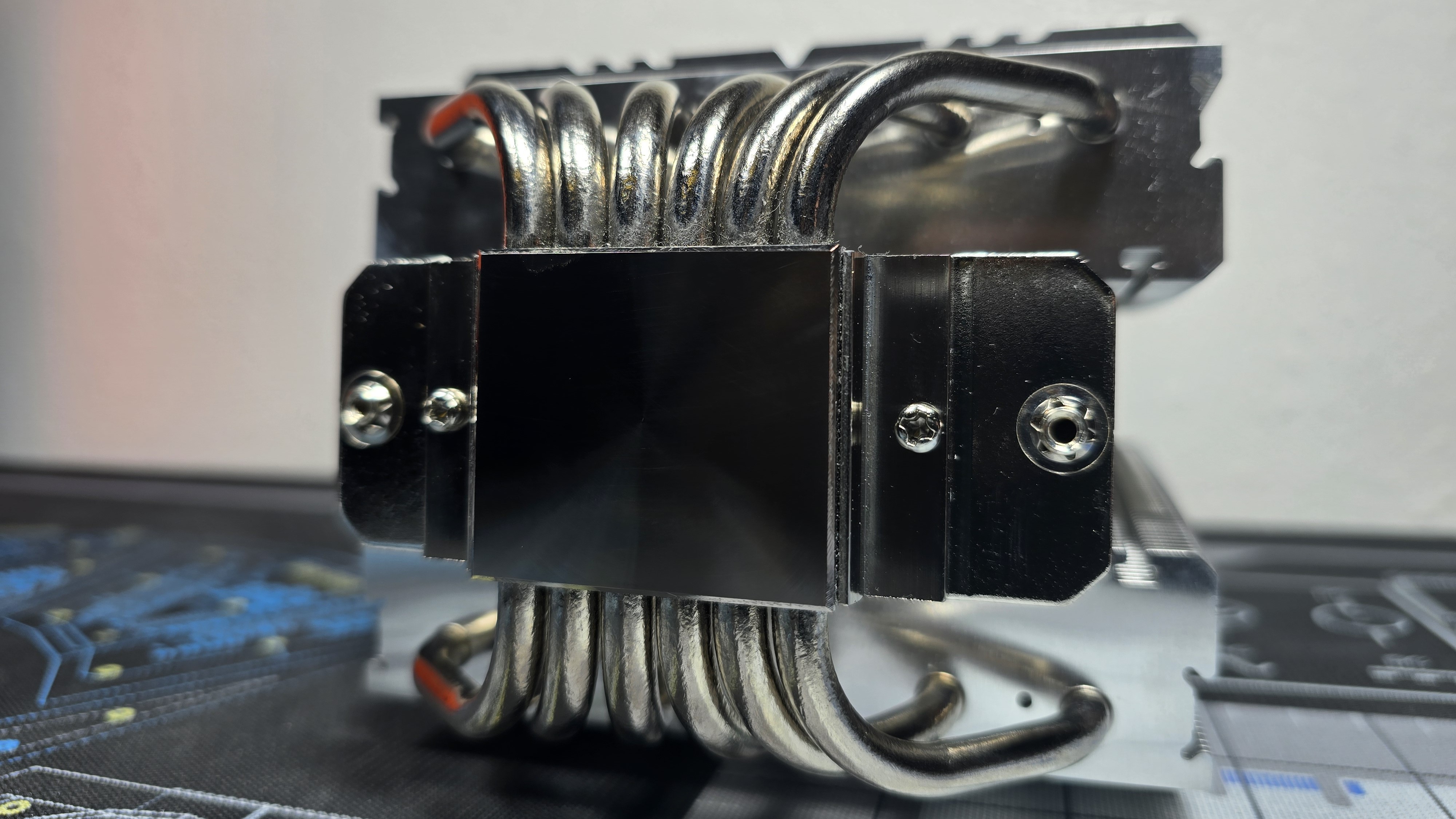
● Frost X25 Thermal Paste
The AIO comes with a tube of ID-Cooling’s Frost X25 thermal paste. This is the company’s entry level paste, with thermal conductivity advertised at 10.5/M-K. We’ll be taking a look at this paste in more detail in our upcoming refreshed thermal paste tests.
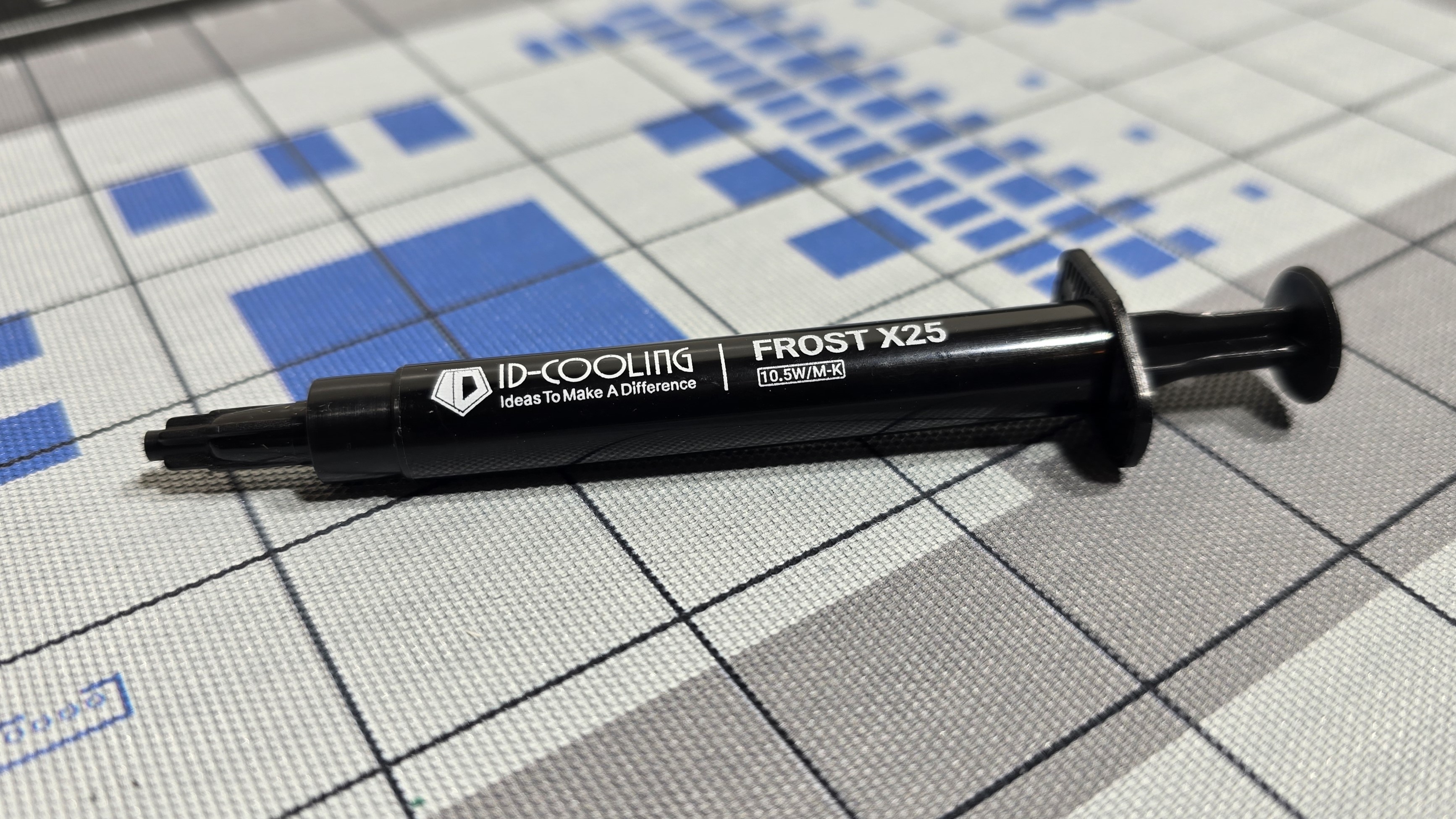
● Two 120mm fans
As I say in nearly every cooler review, there’s more to a cooler than just the heatsink or radiator. The bundled fans significantly impact cooling and noise levels, as well as how the cooler looks in your case.
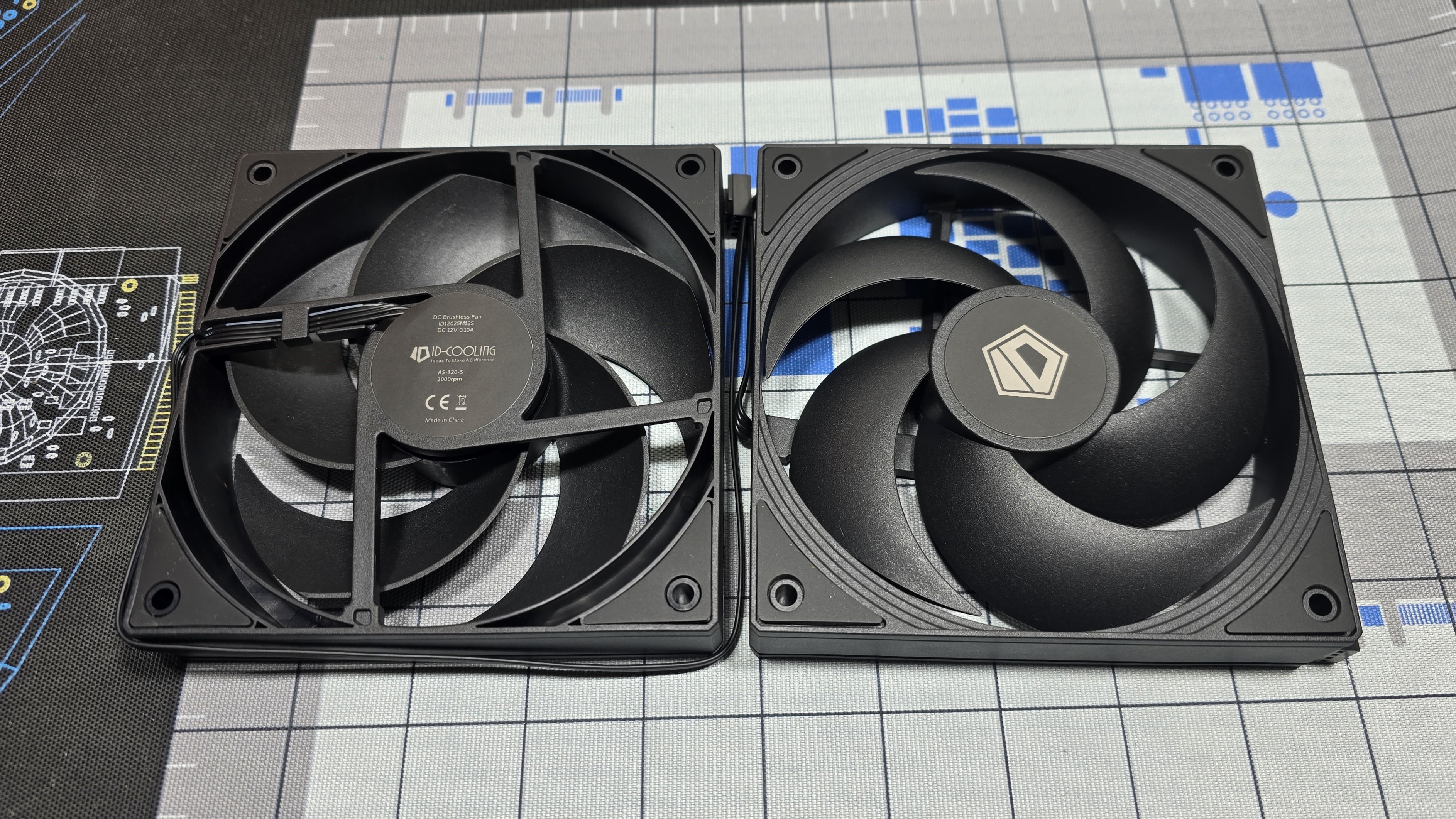
LGA1700 Socket Bending
There are also many factors other than the CPU cooler that can influence your cooling performance, including the case you use and the fans installed in it. A system's motherboard can also influence this, especially if it suffers from bending, which results in poor cooler contact with the CPU.
In order to prevent bending from impacting our cooling results, we’ve installed Thermalright’s LGA 1700 contact frame into our testing rig. If your motherboard is affected by bending, your thermal results will be worse than those shown below. Not all motherboards are affected equally by this issue. I tested Raptor Lake CPUs in two motherboards. And while one of them showed significant thermal improvements after installing Thermalright’s LGA1700 contact frame, the other motherboard showed no difference in temperatures whatsoever! Check out our review of the contact frame for more information.
Testing Methodology, and how my testing differs vs the competition
My cooler testing is specifically designed to emulate the conditions a user would actually experience when using a computer. Some reviewers test coolers using an open bench. I do not like this method, it reduces cooling difficulty. When you use a case, the internal temperature of that case will become higher than that of the room’s ambient temperature, increasing the saturation of the cooler and overall cooling difficulty. Testing outside of a case will give an advantage to weaker coolers, especially those with fans that aren’t very strong.
Others test using a thermal heatplate. This method suffers from all the drawbacks of an open bench, but also doesn’t accurately represent cooling a CPU. A thermal plate evenly distributes a thermal load across the copper heat conduction square. The problem with this type of testing is that modern AMD Ryzen and Intel Core CPUs have most of their heat concentrated in a few hotspots – and cooling a concentrated source of heat is more difficult than cooling a source that’s spread evenly.
The last thing I do differently than some cooler testers is that I insist on using relatively new CPUs for cooler testing because people building new PCs should be using recent CPUs. Also, thermal density is just different with newer CPUs. Products like Ryzen 3000 “Zen 2” and older 14nm Intel CPUs have lower heat density compared to modern counterparts, due to a combination of using older manufacturing processes and running at lower clock speeds. Using a weaker cooler with an older CPU can make the cooler look better performing than it actually is with current-gen silicon.
Today's highest-end CPUs, whether Intel or AMD, are difficult to cool in intensive workloads. In the past. reaching 95 degrees Celsius or more on a desktop CPU might have been a cause for concern. But with today’s top-end CPUs, this is considered normal operation. Similar behavior has been present in laptops for years due to cooling limitations in tight spaces.
All testing is performed with a 23 degrees C ambient room temperature. Multiple thermal tests are run on each CPU to test the cooler in a variety of conditions, and acoustic measurements are taken with each result. These tests include:
1. Noise-normalized testing at low noise levels
2. Out-of-the-box / Default configuration thermal and acoustic testing
a. No power limits enforced
b. Because CPUs hit TJ Max in this scenario, the best way to compare cooling strength is by recording the total CPU package power consumption.
3. Thermal and acoustic testing in power-limited scenarios
a. Power limited to 175W to emulate a medium-intensity workload
b. Power limited to 125W to emulate a low-intensity workload
The thermal results included are for 10-minute testing runs. To be sure that was sufficiently long to tax the cooler, we tested both Thermalright’s Assassin X 120 R SE and DeepCool’s LT720 with a 30-minute Cinebench test with Intel’s i9-13900K for both 10 minutes and 30 minutes. The results didn’t change much at all with the longer test: The average clock speeds maintained dropped by 29 MHz on DeepCool’s LT720 and 31 MHz on Thermalright’s Assassin X 120 R SE. That’s an incredibly small 0.6% difference in clock speeds maintained, a margin of error difference that tells us that the 10-minute tests are indeed long enough to properly test the coolers.
Testing configuration – Intel LGA1700 platform
Thermal results without power limits
Without power limits enforced on Intel’s i7-13700K, the CPU will hit its peak temperature (TJ Max) and thermally throttle with even the strongest of air coolers. When the CPU reaches its peak temperature, I’ve measured the CPU package power to determine the maximum wattage cooled to best compare their performance.
The general exception to this comes with the strongest AIOs on the market, which can keep Intel’s i7-13700K under TJ Max. This is no small task, as most 360mm AIOs still fail this test.
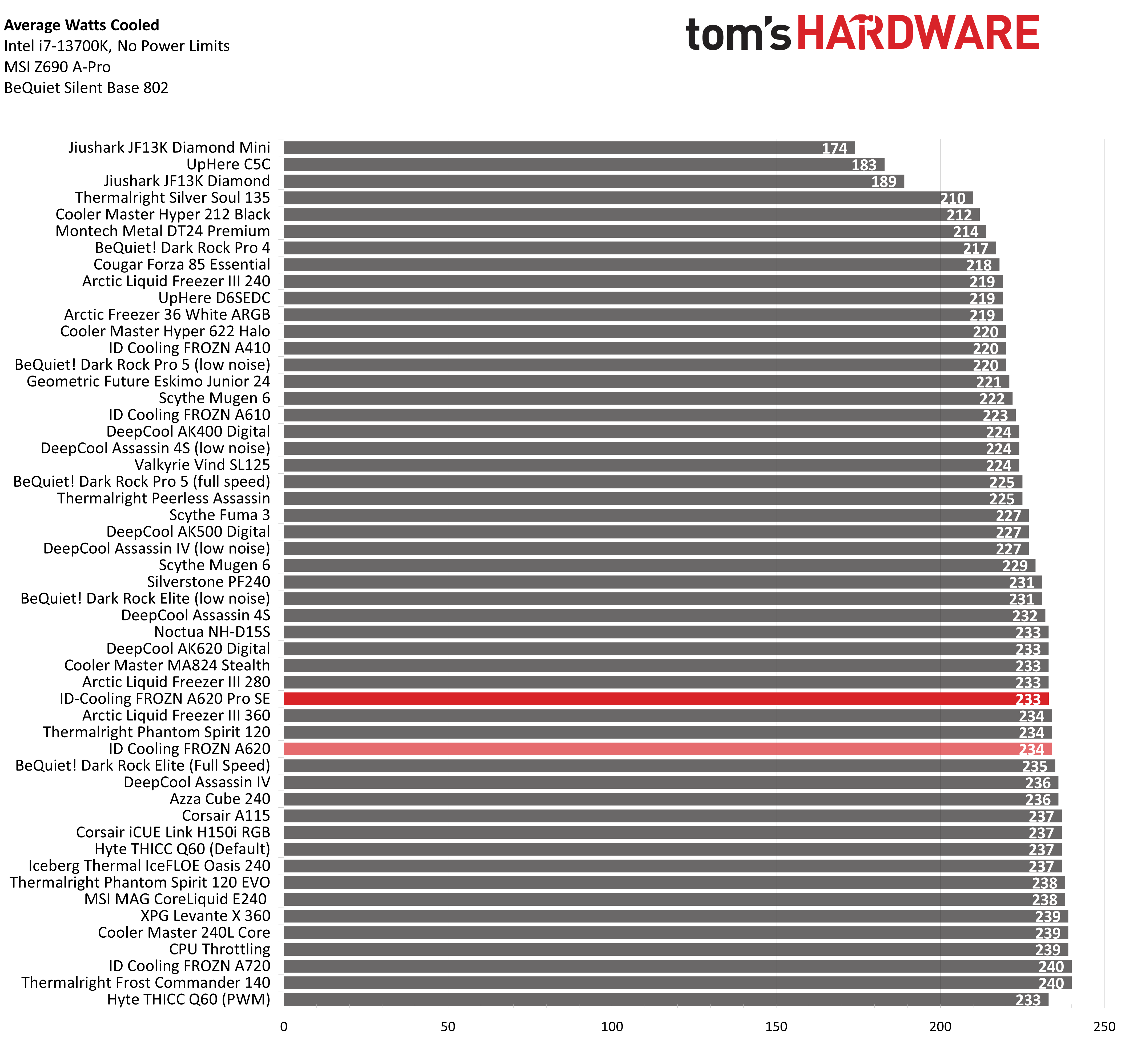
The thermal performance was a single watt behind its predecessor. While this is technically a regression, the difference of a single watt is essentially margin of error difference and it will not lead to any perceptible performance differences. When you’re dealing with a difference this small, its more important to consider noise levels.
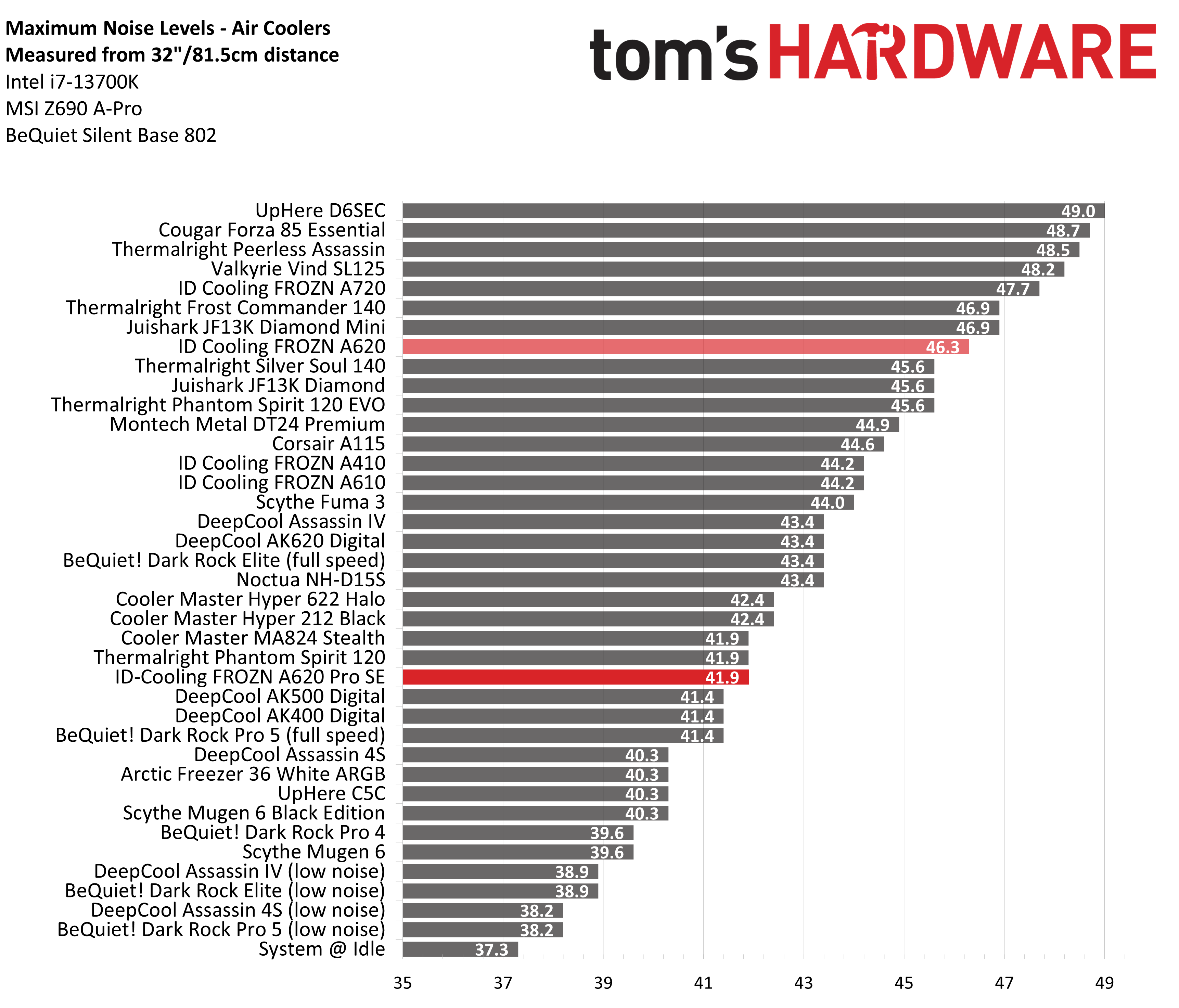
To achieve this level of performance, the unrestricted fans run up to 41.9 dBA. This is a moderate noise level, but it is quieter than most coolers on the market. Compared to its predecessor, this is a reduction of 4.4 dBA. Depending on your sensitivity to noise levels, this may feel like less than half as loud as the original model.
Thermal results with noise normalized to 38.2 dBA
Finding the right balance between fan noise levels and cooling performance is important. While running fans at full speed can improve cooling capacity to some extent, the benefits are limited and many people prefer a quieter system. With this noise-normalized test, I’ve set noise levels to 38.2 dBA. This level of noise is a low volume level, but slightly audible to most people.
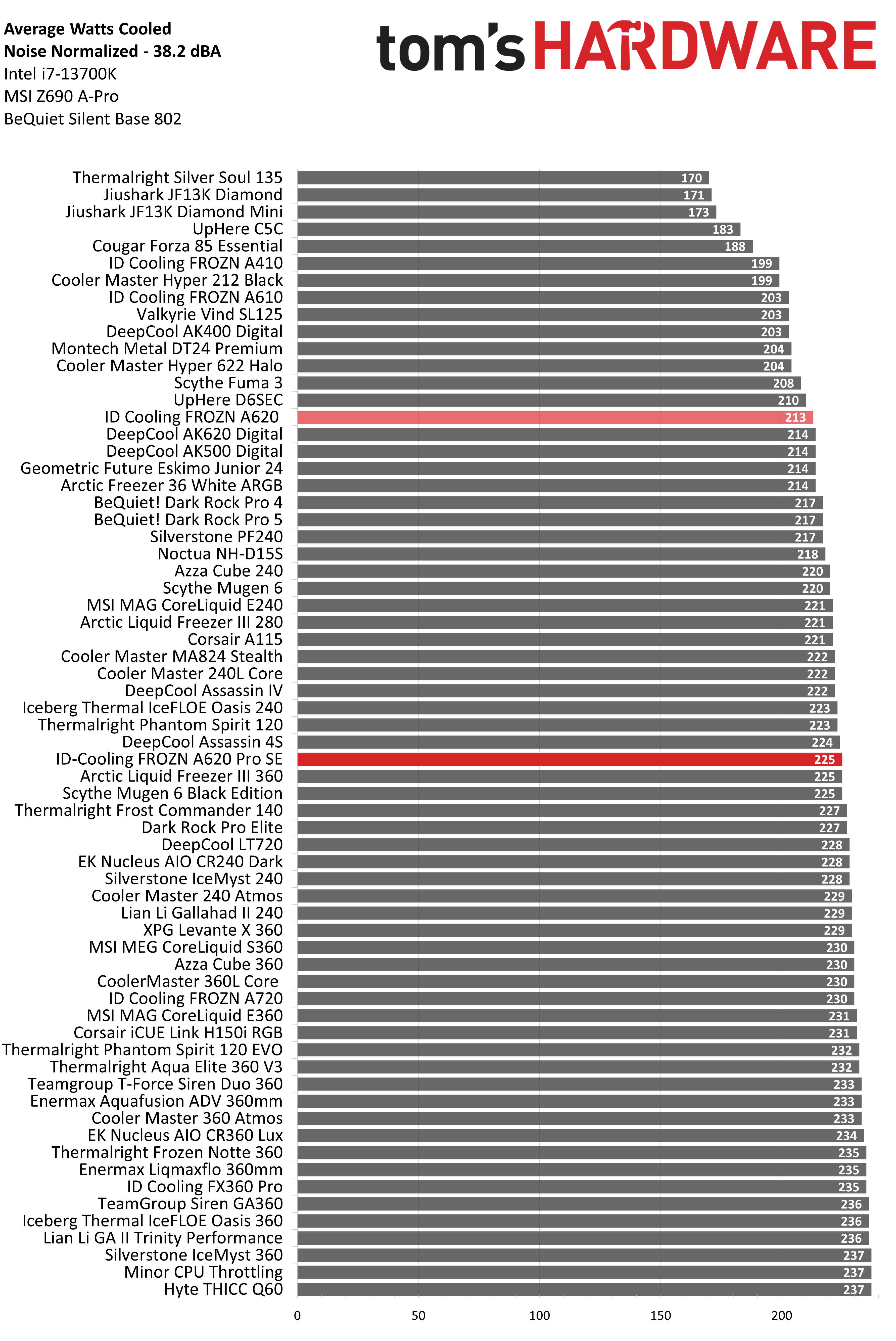
With 225W cooled during the course of testing, the A620 Pro SE improved performance by 12W compared to its predecessor — that’s a 5.6% increase in cooling capacity.
175W Cinebench results
Most coolers on the market can keep Intel’s i7-13700K under its peak temperature if the power consumption is limited, so for this test, we’ll be looking at the CPU’s actual temperature.
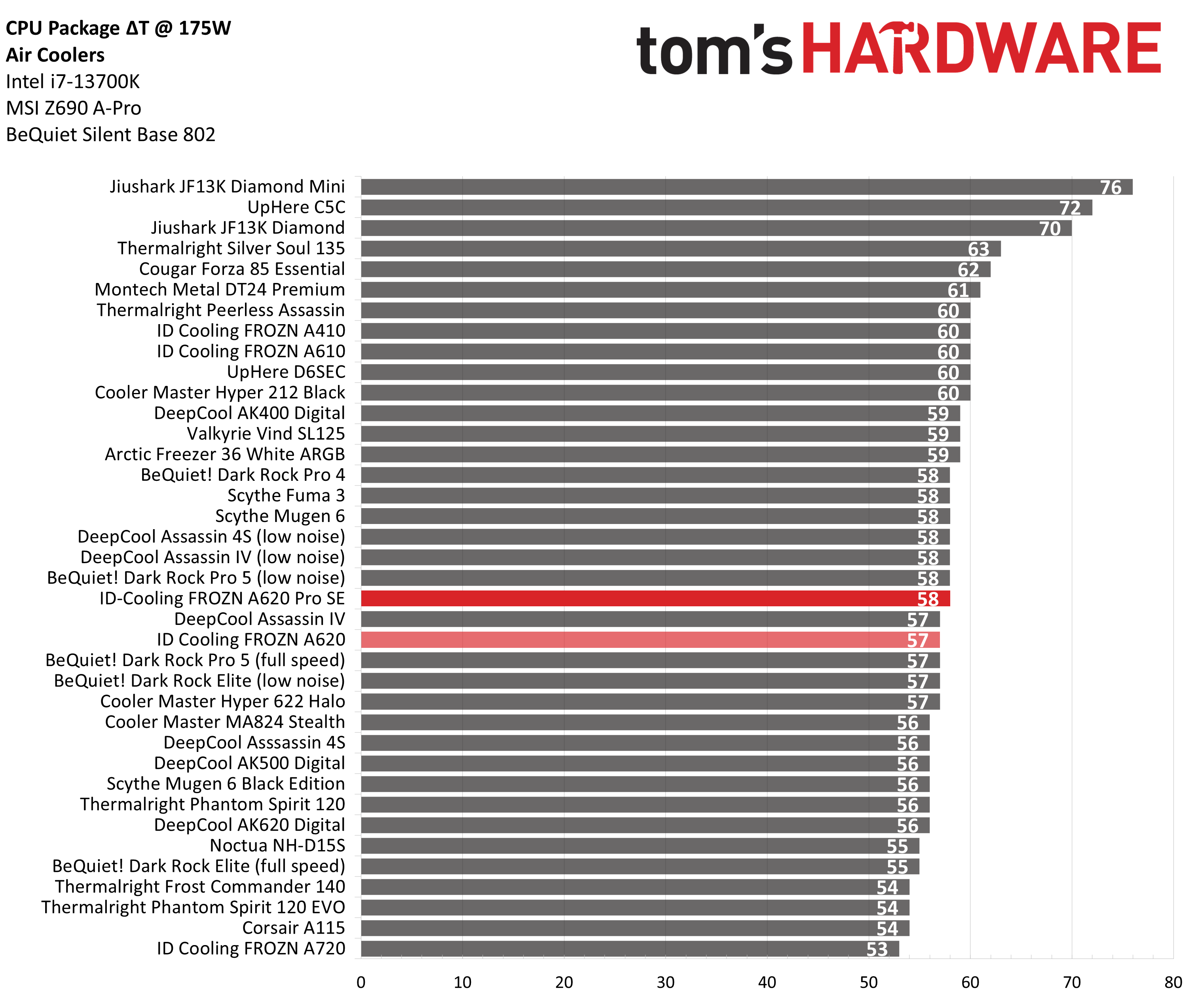
The result of 58C over ambient is fairly good, and falls in the top half of our results. Technically, this is 1C behind its predecessor, but temperature is only half of the picture. The noise levels of the A620 Pro SE recorded are vastly improved compared to its predecessor, running 3.8 dBA quieter. Its measurement of only 39.6 dBA in this moderately stressful workload puts it in the company of the quietest coolers on the market.
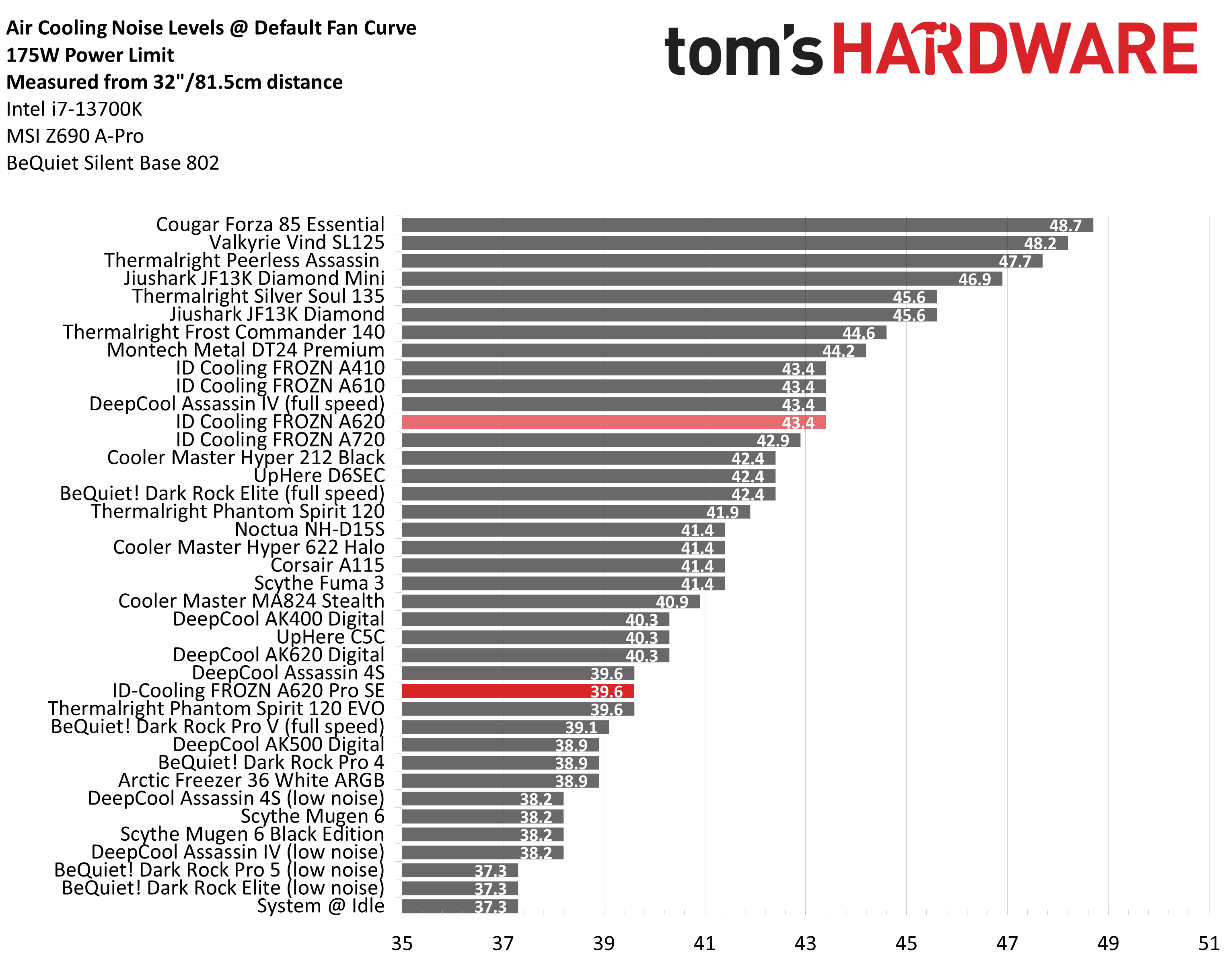
125W Cinebench results
The lowest power limit I test with Raptor Lake CPUs is 125W. This is a high enough limit to allow the CPU to maintain its base clock speeds even in the most intensive tests, and most coolers should be capable of keeping the CPU below TJ Max (the max temperature before throttling) – even low-end coolers.
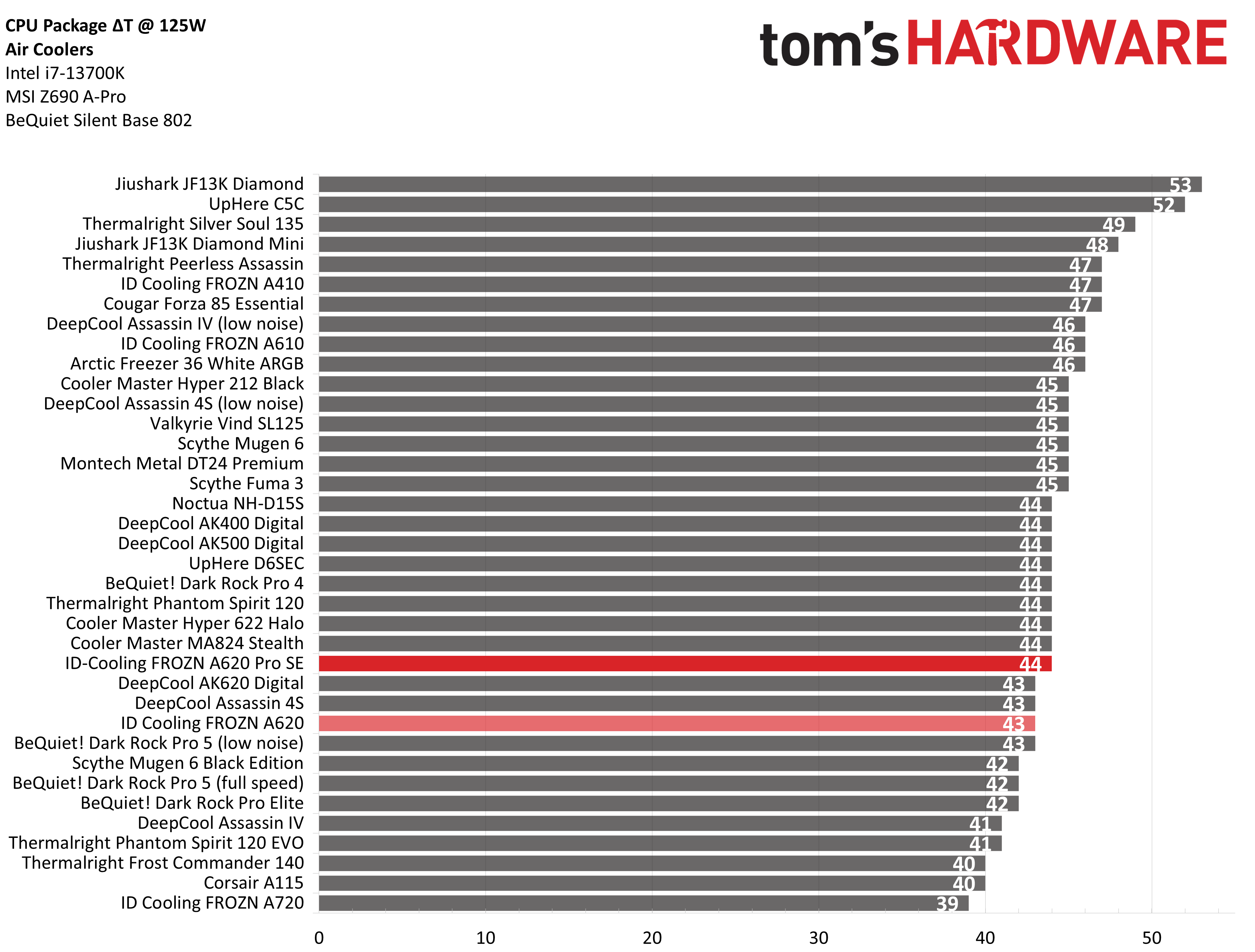
Even Intel’s stock cooler can handle a load like this with ease. That said, a result of 44C over ambient is one of the better results we’ve recorded in this scenario.
Noise levels, rather than CPU temperature, are the most important factor here. The ambient noise with this system running at idle is 37.3 dBA, and that’s the same reading we had in this test. What that means is the CPU cooler was running quieter than the system fans at their low setting.

Conclusion
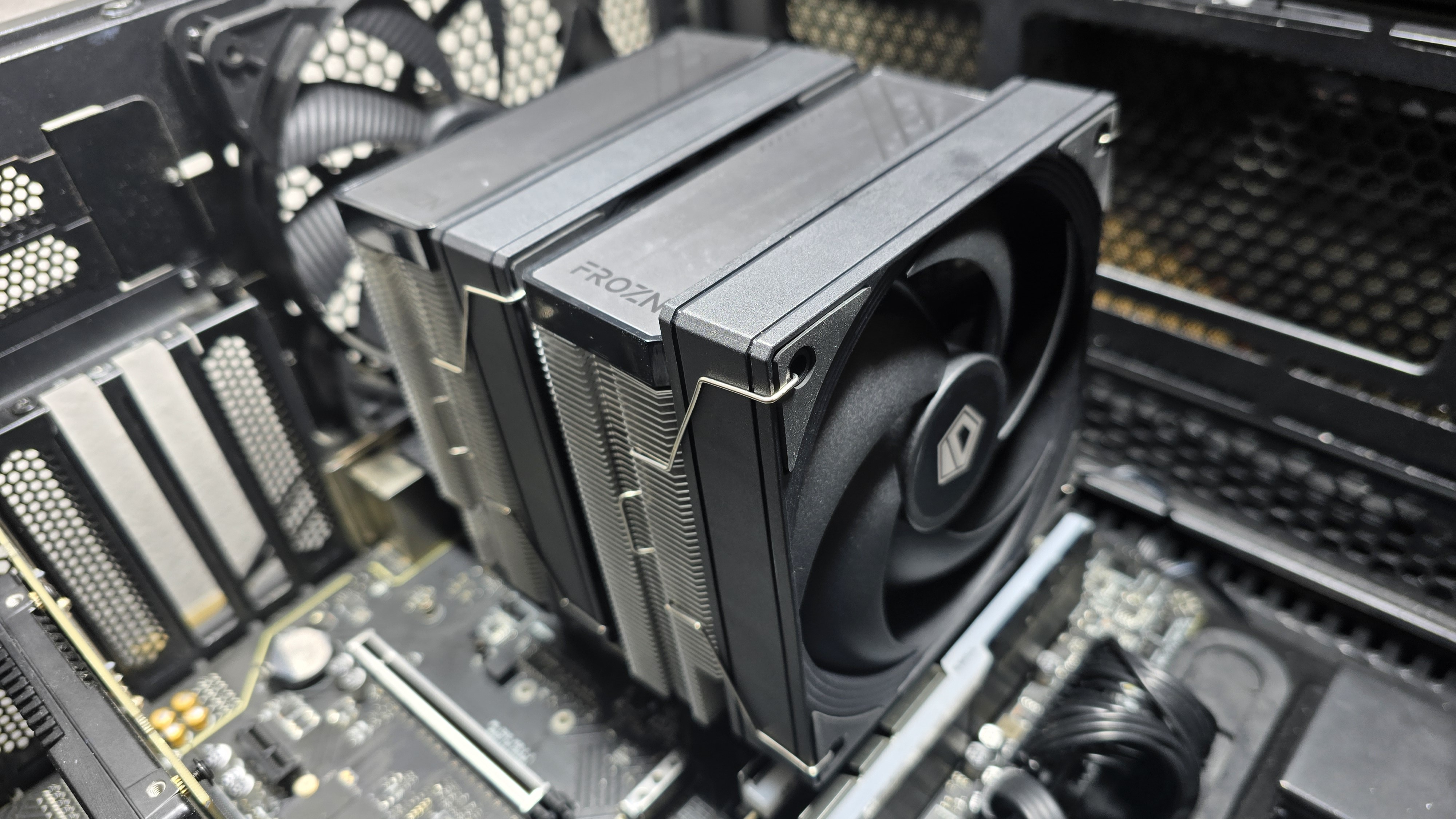
With the release of the A620 Pro SE, ID-Cooling is directly challenging Thermalright’s claim to the best value-focused air coolers on the market. The Frozn A620 Pro SE provides cooling comparable to some of the stronger performers on the market for only $30 USD, and does so while running quieter than the competition.







